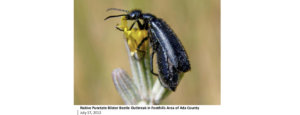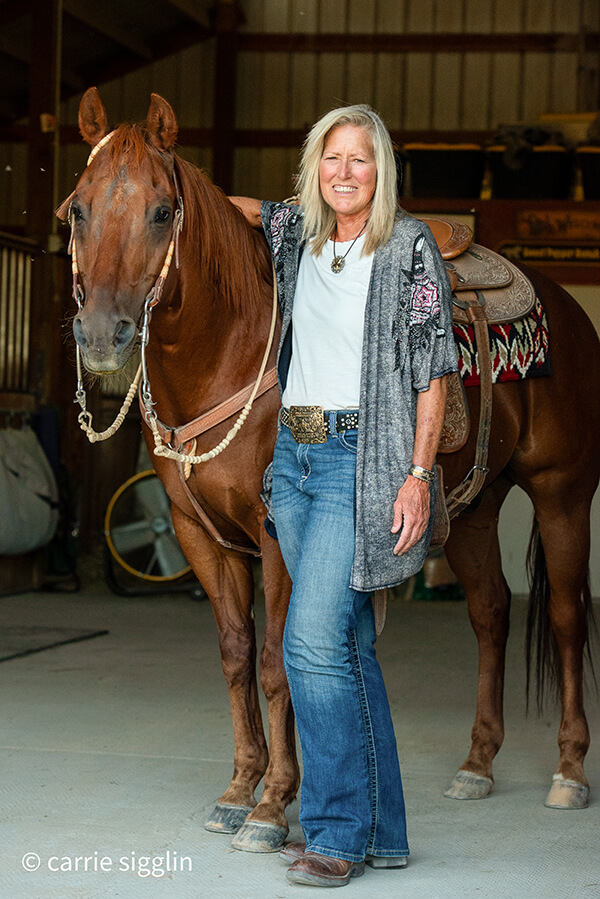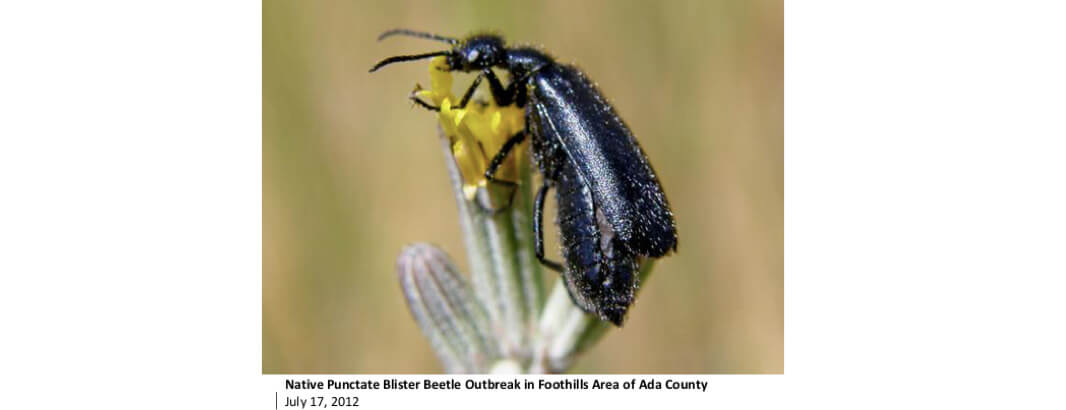Part 2: Precautions to Help Safeguard Your Horses
by Alayne Blickle, Horses for Clean Water
Last month in Part 1 of this series we talked about a Pacific Northwest outbreak of blister beetles, a poisonous insect whose toxins can cause mild depression to death when ingested in alfalfa hay by horses. Blister beetles are associated with weedy conditions and alfalfa hay.  Pacific Northwest & Treasure Valley Pest Alert, a newsletter distributed by the University of Idaho Extension and Oregon State University Extension, identified an outbreak of these poisonous insects in the foothills of Boise, Idaho. Todd Murray an entomologist with Washington State University in Skamania County, WA verified this and noted that the pests have also been turning up in Eastern Washington as well.
Pacific Northwest & Treasure Valley Pest Alert, a newsletter distributed by the University of Idaho Extension and Oregon State University Extension, identified an outbreak of these poisonous insects in the foothills of Boise, Idaho. Todd Murray an entomologist with Washington State University in Skamania County, WA verified this and noted that the pests have also been turning up in Eastern Washington as well.
Here are blister beetle management precautions you can implement:
- Know your alfalfa supplier. Talk with them to be sure they are aware of the issues and are keeping tabs on the situation.
- Ask alfalfa producers what precautions they are taking to avoid the presence of blister beetles in forage.
- Control weeds and harvest alfalfa before flowering. Blister beetles are attracted to flowering weeds or blooming alfalfa. Weed-free alfalfa, if harvested before bloom, will be less likely to attract beetles into the hay field.
- Blister beetles are associated with grasshoppers; the larva stage of the blister beetle feeds on grasshopper eggs. Perhaps one way to avoid an infestation of blister beetles is to not have grasshoppers or at least not in excessive amounts. Consider least toxic grasshopper control methods such as encouraging insect-eating wildlife such as sage-grouse as well as other birds, reptiles and mammals. A biological control protozoan, nosema locustae, has been primarily used for small grasshopper infestations.
- Purchase hay harvested before May or after September. This will not guarantee a lack of blister beetles but will greatly reduce the chance since blister beetles emerge during mid-summer months.
- Avoid use of hay conditioners or crimpers if blister beetles are present at harvest time. Conditioners or crimpers often kill large numbers of beetles in a small area and dead bodies are held in the windrows. Using a self-propelled harvester with wide set wheels and no conditioner or crimper will help prevent most beetles from being killed at the time of cutting. Living beetles will move out of the alfalfa as it dries. A sickle bar mower will do the same if the operator avoids driving on freshly cut hay.
- Scout fields 7 to 8 days prior to harvest. If blister beetles are present, use Sevin (carbaryl) or other recommended pesticides. Check the label, your dealer, or your local Extension Office for the suggested application rates. Carbaryl must be applied 7 days prior to grazing or cutting alfalfa. Other pesticides may have different pre-harvest intervals. The application should kill most blister beetles and allow them to drop to the ground and away from harvest equipment. Care should be taken not to pick up the dead beetles with equipment during the harvesting process. Read and follow all pesticide label precautions and restrictions.
- If blister beetles are suspected, carefully inspect your hay before feeding, pulling apart and examining each flake for dead blister beetles. If present, do not feed infested hay to horses.
- If you determine that you live in an infested area consider switching from feeding alfalfa to some type of grass hay—blister beetles do not feed on grass hay.
If you think your horse may have ingested a blister beetle contact your veterinarian immediately. If you discover blister beetles in your alfalfa, or have a question on identifying a beetle, contact your nearest extension office.
View the full alert and download attached files at www.pnwpestalert.net. Read an interview in the July 19, 2012 issue of the Capitol Press with Jim Barber, entomologist at the University of Idaho’s Parma research station at http://www.capitalpress.com/content/SE-blister-beetle-072712
Published October 2012 Issue

Alayne Blickle began in the 1990’s as a pioneer in water conservation and natural resources conservation by creating the entrepreneurial consulting business, Horses for Clean Water, an award-winning internationally acclaimed education program that looks for horse-healthy, nature-based solutions to land management challenges. She continues this work today partnering with agencies, organizations, and horse owners throughout North America and worldwide. She is a regularly contributing writer and photojournalist to several equine publications.
Alayne lives with her horse trainer husband, Matt Livengood, in southwestern Idaho where they raise and train AQHA horses and mustangs on their eco-friendly horse ranch. Contact her through the Horses for Clean Water website or through their ranch website Sweet Pepper Ranch.
For more information contact Alayne at [email protected] or 206-909-0225.






